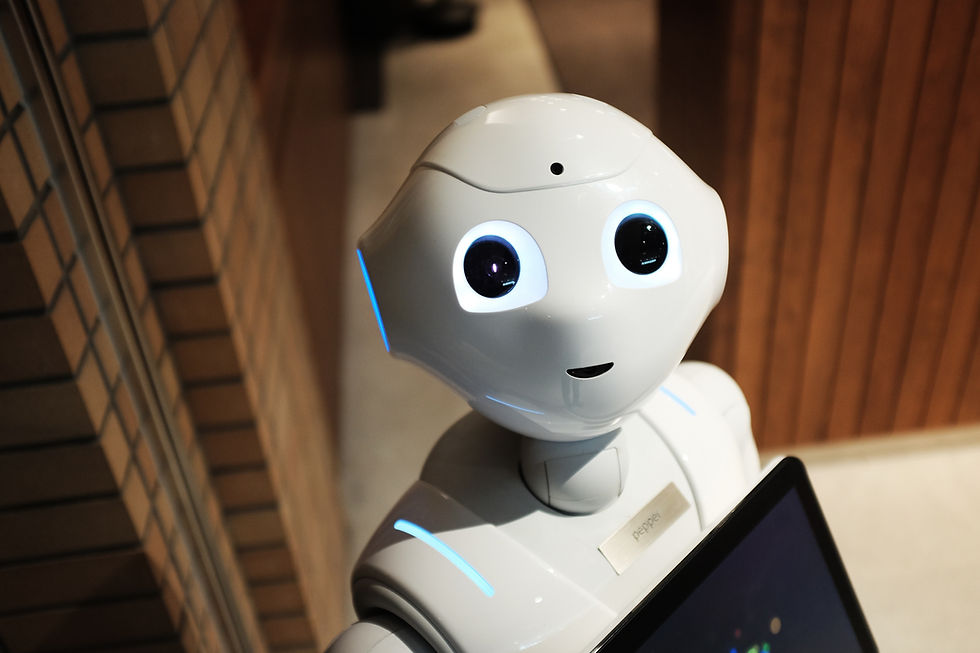AI in Cybersecurity: The Good, The Bad, and The Ethical Dilemma
- Vidisha Gupta
- Feb 14
- 4 min read
In the digital landscape of 2025, artificial intelligence (AI) has become both the superhero and the supervillain of cybersecurity. It’s like that classic Spider-Man meme where Spidey points at his identical counterpart. AI is both the defender and the adversary, each side trying to outwit the other. In this short article, we’ll explore how AI is bolstering our defences, the ways it’s being weaponized by cybercriminals, and the ethical tightrope we must walk to ensure a secure digital future.

AI: The Caped Crusader of Cybersecurity
Imagine AI as Batman, vigilantly patrolling the digital streets to keep us safe. In 2025, AI-driven tools have become indispensable in identifying and neutralising threats at lightning speed. These systems analyse vast amounts of data to detect anomalies, predict potential breaches, and respond in real time. For instance, AI-powered solutions can sift through network traffic to identify malicious activities that would be nearly impossible for human analysts to catch promptly.
Real-World Examples of AI as a Cybersecurity Guardian
Threat Detection and Response: AI-driven security systems like Microsoft Defender and IBM Watson for Cybersecurity use machine learning to detect patterns indicative of cyber threats. These tools can detect anomalies in user behaviour, such as a login attempt from an unusual location, and trigger alerts or automatically block access.
Automated Incident Response: Security operations centers (SOCs) now integrate AI to automate responses to attacks. For example, when a company experiences a Distributed Denial of Service (DDoS) attack, AI can identify the malicious IP addresses and block them within seconds, significantly reducing downtime.
Passwordless Authentication: AI-driven biometric authentication (facial recognition, voice recognition, and fingerprint scanning) is reducing reliance on traditional passwords, making it harder for hackers to gain unauthorised access.
The Dark Side: AI as the Supervillain
But just as AI dons the hero’s cape, it also wears the villain’s mask. Cybercriminals are leveraging AI to craft more sophisticated attacks. This time, think of AI as Loki, the trickster god, using its powers to deceive and infiltrate. AI-generated phishing emails, for example, are becoming eerily convincing, mimicking the tone and style of legitimate communications to dupe even the most vigilant recipients.
How Cybercriminals Are Weaponizing AI
Deepfake Scams: AI-generated deepfake technology is being used to impersonate executives and trick employees into transferring funds or revealing sensitive information. A 2019 case involved a UK-based energy firm losing $243,000 after an employee was tricked by an AI-generated voice message that mimicked the CEO’s voice.
AI-Powered Phishing Attacks: Traditional phishing emails were often riddled with typos and poor grammar, making them easier to spot. AI now generates phishing emails with perfect language, mimicking corporate communication styles. A January 2025 cybersecurity warning highlighted a new AI-powered phishing scam targeting Gmail, Outlook, and Apple users (NY Post, 2025).
Self-Evolving Malware: AI is being used to create polymorphic malware, which can change its code dynamically to avoid detection by traditional antivirus programs.
AI-Powered Botnets: Malicious AI can coordinate massive botnets to launch cyberattacks, overwhelm networks, and steal data. Attackers are using AI to automate and refine their cyber warfare tactics, making it increasingly difficult for organizations to defend against them.
The Ethical Dilemma: Walking the Tightrope
As we harness AI’s power in cybersecurity, we must grapple with ethical considerations. It’s akin to the "with great power comes great responsibility" mantra. How do we ensure that AI systems respect privacy while effectively combating threats? The balance between security and individual rights is delicate. Moreover, the potential for AI to be used in surveillance raises concerns about overreach and misuse.
Key Ethical Questions in AI-Driven Cybersecurity
Bias in AI Security Systems: AI models are only as good as the data they are trained on. If AI systems disproportionately flag certain user behaviours as suspicious due to biased training data, they could lead to unfair security measures.
The Risk of AI-Driven Surveillance: Governments and corporations using AI-powered cybersecurity systems must ensure that these tools do not lead to mass surveillance and erosion of privacy.
Accountability and AI Decision-Making: If an AI security system wrongly blocks a legitimate user or mistakenly labels a company as a cyber threat, who is responsible? Should companies be held accountable for AI errors?
The EU AI Act, with phased compliance deadlines in effect from February 2025, mandates strict regulations on AI use in cybersecurity.
Looking Ahead: The Future of AI in Cybersecurity
As we move forward, the relationship between AI and cybersecurity will continue to evolve. The key will be fostering collaboration between human intelligence and artificial intelligence. By combining the intuition and ethical judgment of humans with the speed and analytical prowess of AI, we can create a robust defence against cyber threats.
What Lies Ahead in AI-Powered Cybersecurity?
AI Cybersecurity Copilots: AI assisting cybersecurity teams in real-time decision-making.
Stronger AI Regulations: Governments tightening AI-related cybersecurity laws.
More Resilient AI Models: Security firms building AI that adapts faster than attackers' AI.
In conclusion, AI stands as both a formidable ally and a challenging adversary in the realm of cybersecurity. By staying informed, embracing ethical practices, and fostering collaboration, we can harness the power of AI to build a safer digital world.

Comments